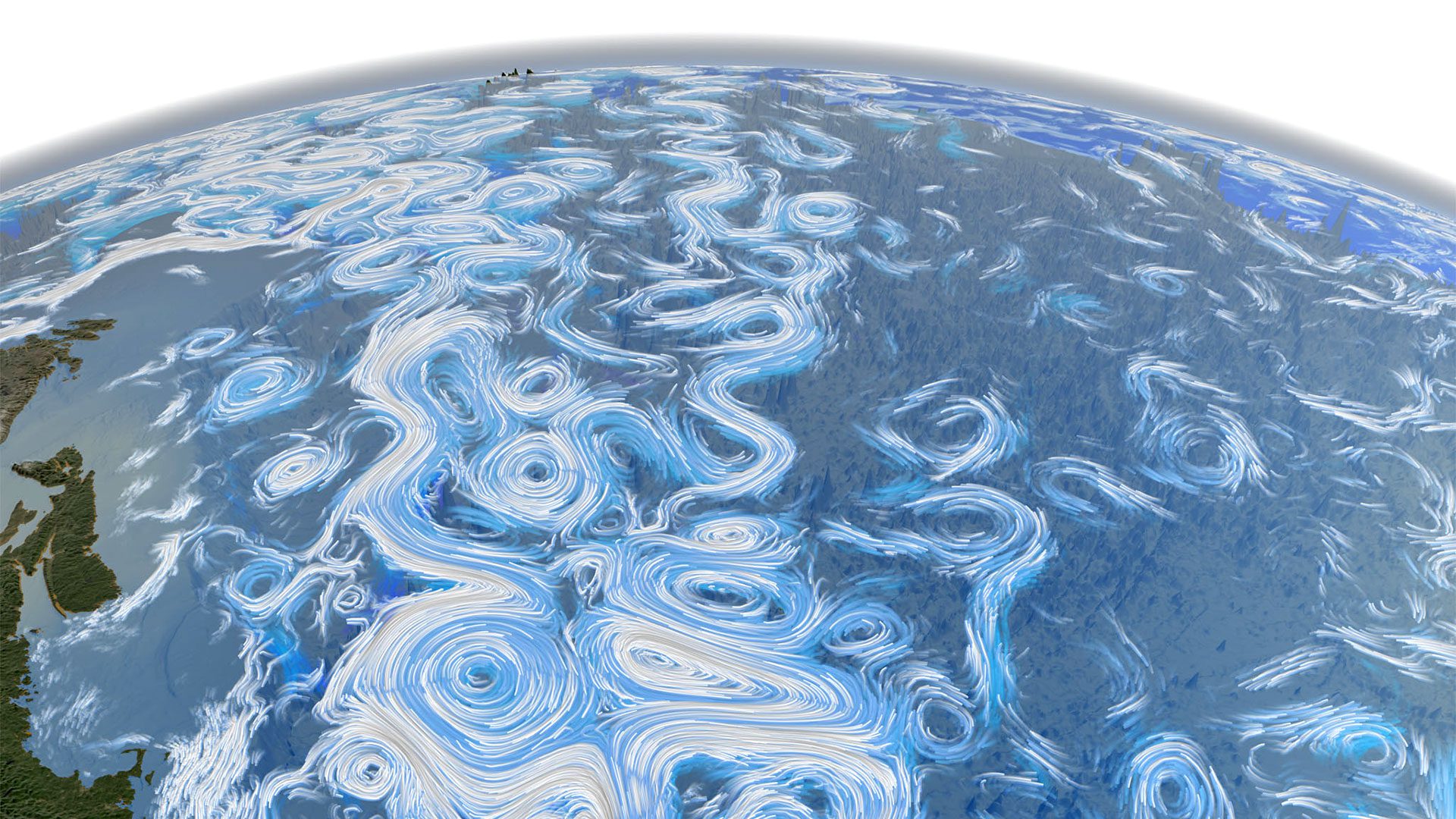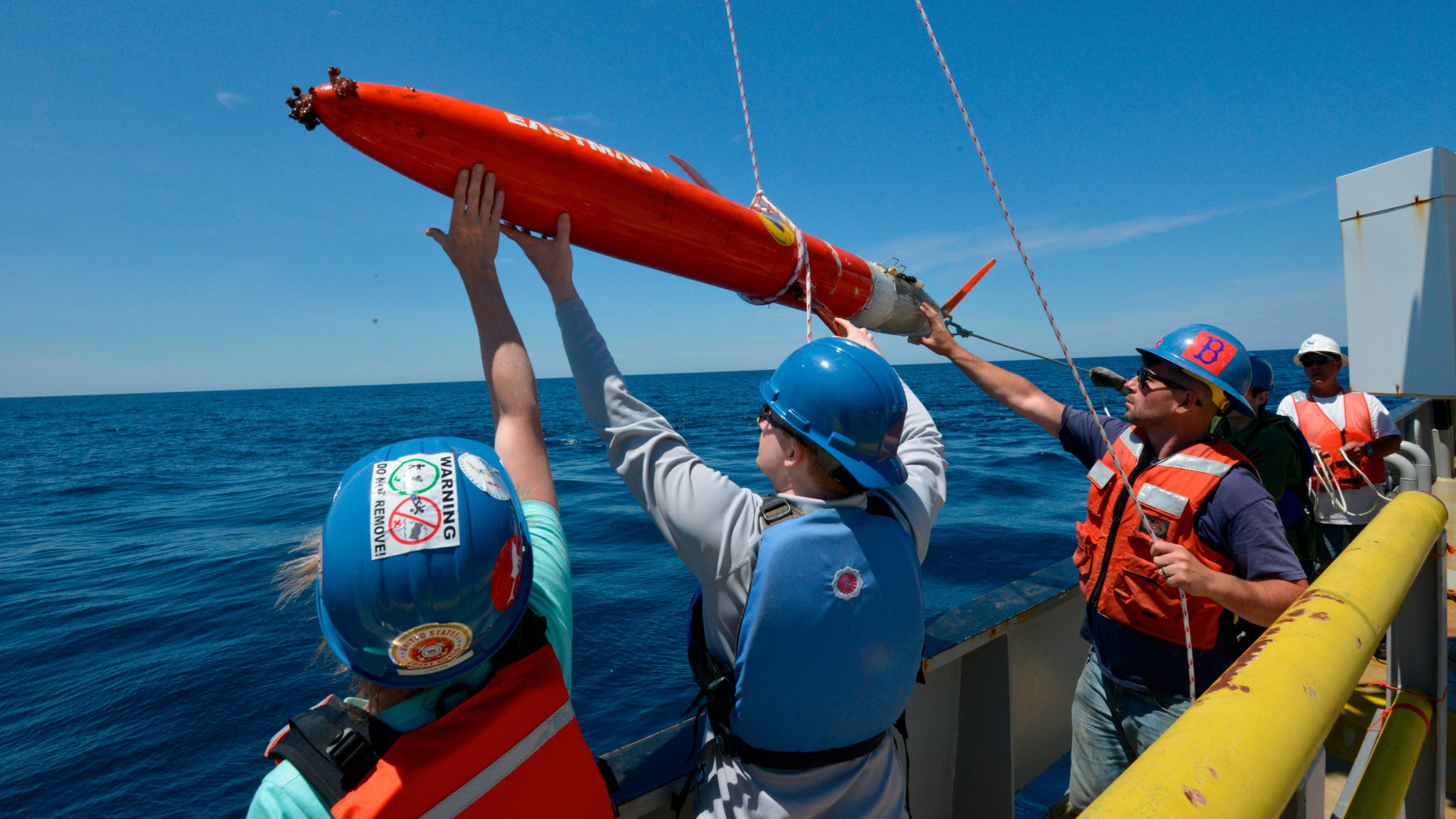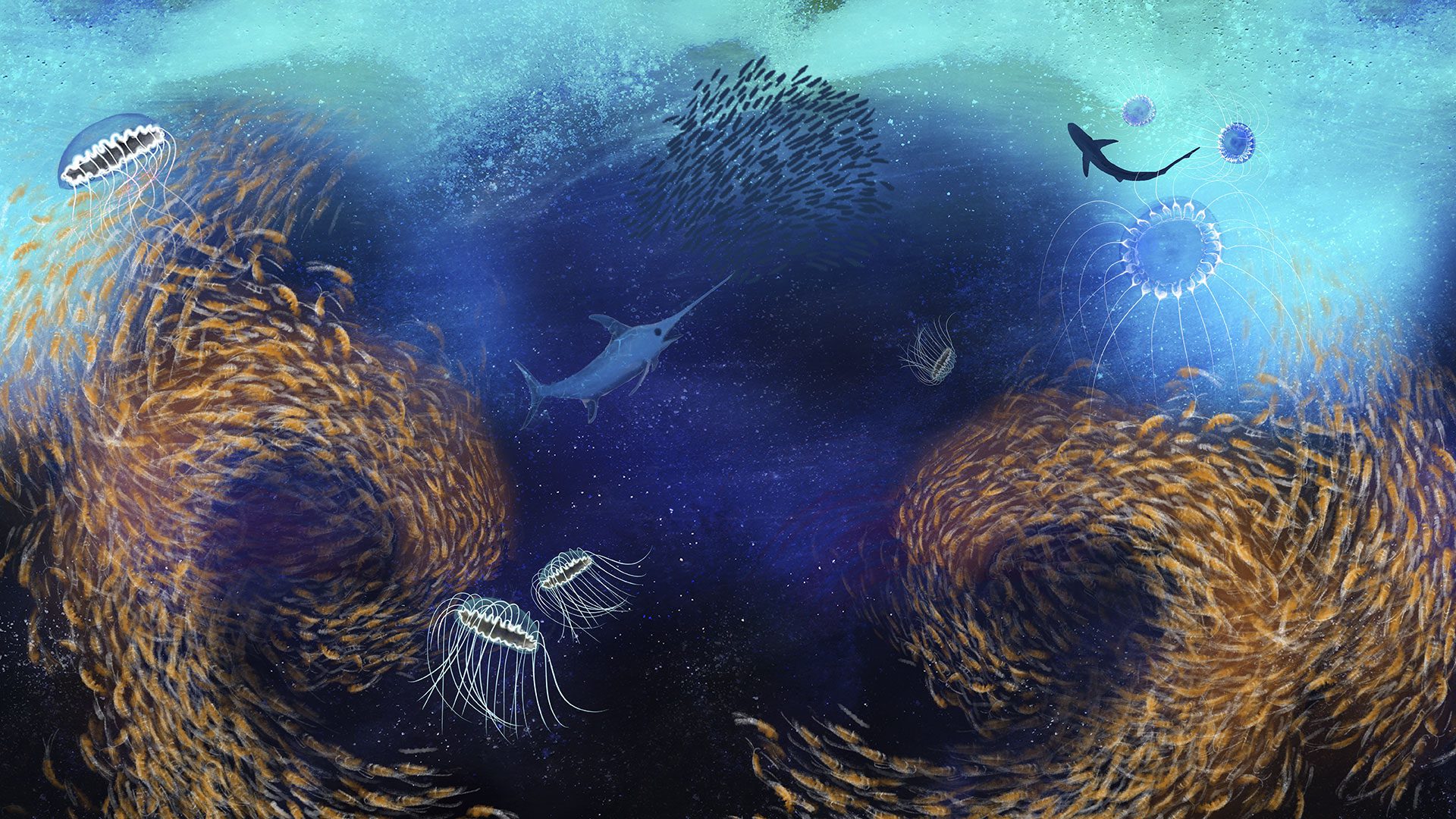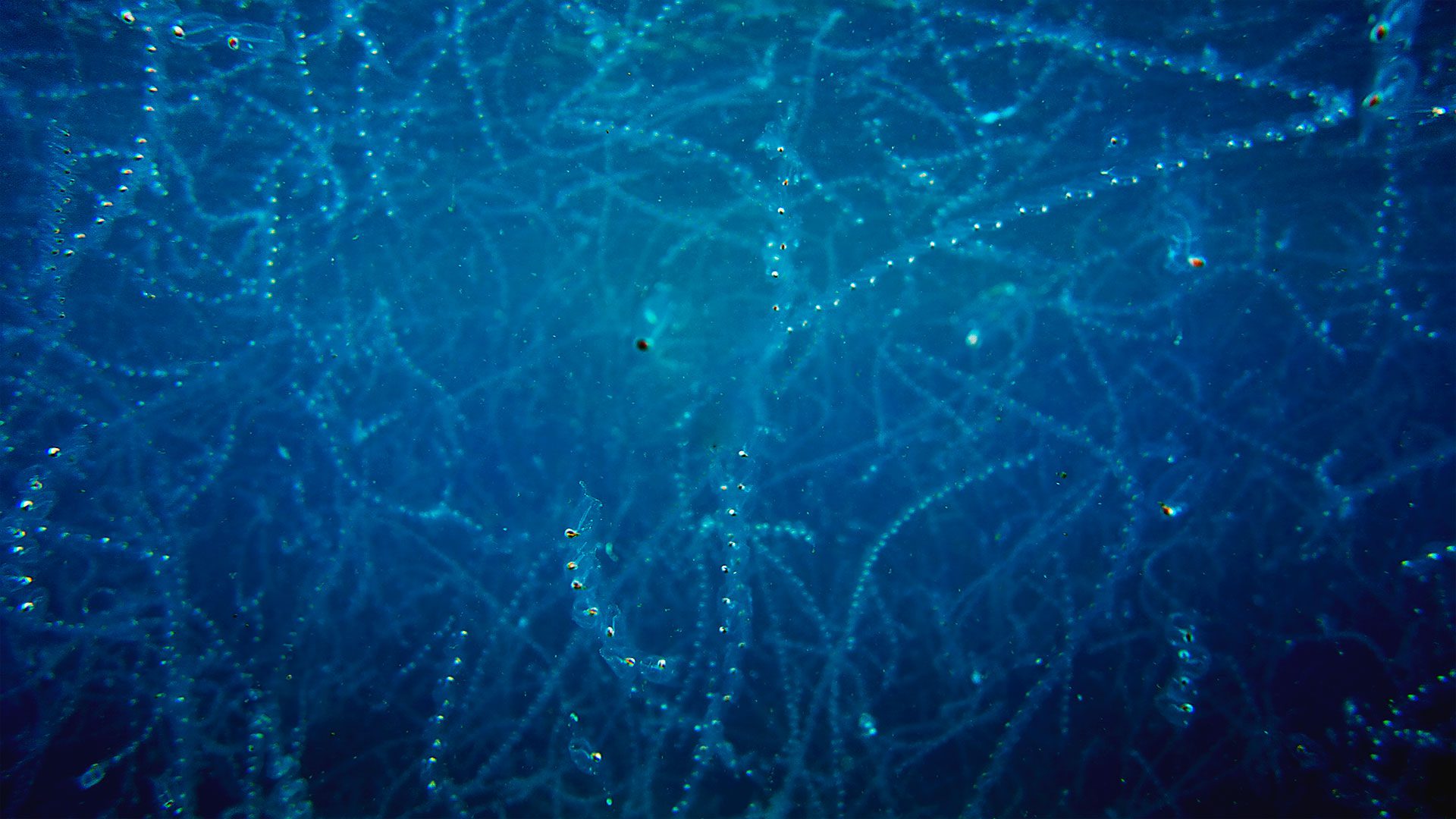
Will the Gulf Stream really shut down?
WHOI physical oceanographer Robert Todd weighs in
Estimated reading time: 3 minutes
Recent news headlines suggest the Gulf Stream current could shut down in just a few years—or perhaps a few decades—bringing about a catastrophic change in global climate. Will the Gulf Stream actually shut down? No, say oceanographers at the Woods Hole Oceanographic Institution.
Why do headlines say otherwise? It’s due to an oversimplification of the currents that drive global climate. People conflate the Gulf Stream with a more complex system of currents known as the Atlantic Meridional Overturning Circulation, or AMOC.
“The Gulf Stream plays a role in the AMOC, but it is also distinct from the AMOC,” explains WHOI physical oceanographer Robert Todd. It’s one arm of a multi-tiered system that circulates water horizontally and vertically throughout the Atlantic Ocean. The Gulf Stream flows along the east coast of North America, carrying warm water from the Florida Straits to the Grand Banks off Newfoundland. From there it continues as the North Atlantic Current across the ocean toward Europe. These currents carry heat from the tropics to higher latitudes and are responsible for temperate climates across much of Europe.
These lateral currents in the upper ocean are a consequence of large-scale winds and the rotation of our spherical planet. Winds blow from west to east across temperate regions and from east to west in the tropics. These winds push water towards the middle of the ocean basin. This, in combination with Earth’s rotation, causes water to move in a clockwise direction: north, then east as the Gulf Stream and North Atlantic Current, south in the ocean interior, and west as the North Equatorial Current at tropical latitudes. Along the east coast of North America, the current is concentrated into the fast-flowing Gulf Stream.
When warm water carried by the Gulf Stream and North Atlantic Current reaches subpolar regions, it loses heat to the atmosphere and becomes colder and denser. The waters then sink to depth and return south, creating a vertical “overturning” circulation throughout the ocean basin that is distinct from the horizontal movement of upper ocean currents. Some of the southward flow travels along the western Atlantic, deep beneath the north-bound Gulf Stream; some flows along the Mid-Atlantic Ridge.
Taken together, this collection of upper ocean and deep-water currents make up the AMOC. And that’s where the confusion lies.
Recent studies have found evidence that warming in the Arctic could lead to an influx of freshwater from glaciers melting in Greenland. It’s possible, but not certain, that freshwater input from melting land-based ice could disrupt deep water formation and thus the AMOC. If seawater is fresh enough, then cooling causes it to turn to ice (which floats) before getting dense enough to sink. So large quantities of freshwater could potentially prevent surface waters from sinking, shutting down those deep-water AMOC currents. There’s evidence that this has happened in the past, and that the influx led to a rapid shift in global climate.
Researchers agree the AMOC will likely slow over the next century, and there’s evidence that a slowdown may have already begun, although it’s not clear if the observed changes are due to climate change or reflect more natural year-to-year variation. An abrupt shutdown like the one featured in news stories is much less certain.
But even if the deep-water portion of the AMOC did shut down, the Gulf Stream would continue to flow. As noted by MIT physical oceanography professor Carl Wunsch in 2004, “The only way to produce an ocean circulation without a Gulf Stream is either to turn off the wind system, or to stop the Earth's rotation, or both.” Neither will happen, even in the most extreme climate change scenarios.
“The Gulf Stream will not shut down, but it is not immune to climate change,” Todd says. He has collected data showing that the current is warming and shifting closer to the coast, which could expose marine life to sudden temperature increases and have profound implications for fisheries. The rate at which it transports water may also change. But it will always continue to flow.




